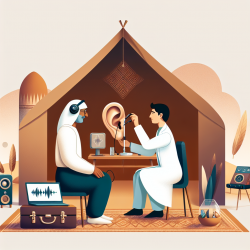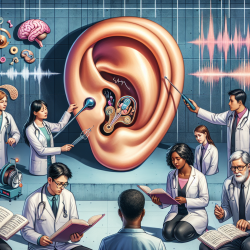Introduction
Environmental noise pollution is an often-overlooked public health issue that can have significant impacts on health and well-being. According to the research article "Environmental Noise Pollution in the United States: Developing an Effective Public Health Response," noise pollution is not just an inconvenience but a serious health hazard. For practitioners working with children, understanding and mitigating the effects of noise pollution can be crucial for improving developmental outcomes.
The Impact of Noise Pollution on Health
The research highlights that over 104 million individuals in the United States are exposed to noise levels that could lead to noise-induced hearing loss. Moreover, noise pollution is linked to other severe health issues such as heart disease, sleep disturbances, and stress. For children, the impact can be even more profound, affecting their learning, behavior, and emotional well-being.
Strategies for Practitioners
As a practitioner, there are several strategies you can employ to mitigate the effects of noise pollution on children:
- Environmental Assessment: Conduct a thorough assessment of the child's learning environment. Identify and address sources of excessive noise, such as traffic or construction, that may be impacting the child's ability to focus and learn.
- Soundproofing: Encourage schools and parents to invest in soundproofing measures. This can include installing noise-reducing windows and doors, using carpets and curtains to absorb sound, and creating quiet zones within the school.
- Education and Advocacy: Educate parents and educators about the impact of noise pollution on children's health and learning. Advocate for policies that reduce noise levels in school environments and communities.
- Use of Technology: Utilize technology such as noise-canceling headphones for children who are particularly sensitive to noise. Online therapy platforms like TinyEYE can offer a quieter, controlled environment for therapy sessions.
Encouraging Further Research
The article underscores the need for updated national-level estimates of noise exposure and its health impacts. Practitioners are encouraged to contribute to this body of research by documenting their observations and experiences with noise pollution in educational settings. Collaborating with researchers to study the effects of noise on child development can lead to more effective interventions and policies.
Conclusion
Noise pollution is a critical public health issue that requires attention and action, especially in environments where children learn and grow. By understanding the implications of noise pollution and implementing strategies to reduce its impact, practitioners can significantly enhance the developmental outcomes for children.
To read the original research paper, please follow this link: Environmental Noise Pollution in the United States: Developing an Effective Public Health Response.










